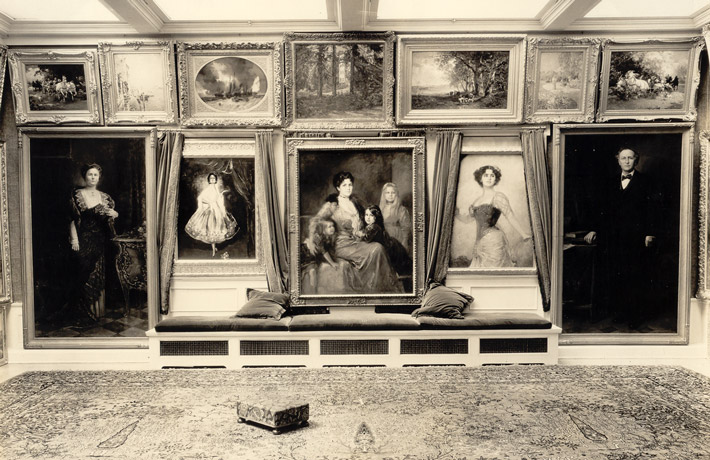Frye Modern
July 08, 2005 - January 29, 2006
A work of art, when publicly displayed, never stands alone. It is always an element within an exhibition created in accordance with historically determined and self-consciously staged installation conventions. Frye Modern examines the Frye Art Museum’s evolution as a modern museum, during a period in which methods for the public display of art were radically altered.
When the Frye Art Museum opened in 1952, Director Walser Greathouse was caught between the traditional and the modern as he determined how to install the Charles and Emma Frye Collection for Seattle audiences. By the 1930s, spacious, modern display methods, in which paintings were positioned on neutral-colored walls at just below eye level and at widely spaced intervals, had become the norm for most museums. By the 1940s, it was rare for a collection of modern art to be installed according to a “skyed” plan, with paintings stacked virtually floor to ceiling and hung very closely together. However, the terms of the Frye will required that as many works as possible from the founding collection be on display at the same time. This could only be achieved by the traditional method of skying the paintings.
Greathouse’s ingenious solution, the double-band display, both satisfied the stipulations of the will and brought modern installation methods to the Frye Art Museum. With this installation solution, Greathouse honored and extended the Frye legacy, making the collection relevant for contemporary audiences.
The Frye home was featured in the Seattle Sunday Times, Society Page, April 29, 1917, the original of which is included in Frye Modern.
Interior of Charles and Emma Frye's home.
